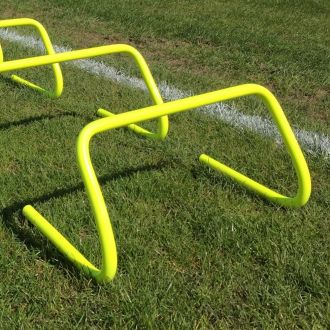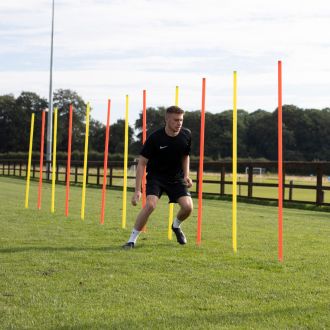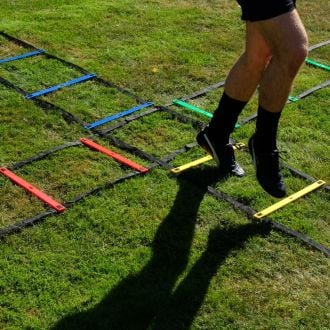How to Protect Yourself from a Bad Knee Injury
Knee injuries are perhaps the most feared of all injuries amongst professional and keen amateur footballers. Depending on the nature of an injury, a player might face up to 12 months on the sidelines while their knee heals, which is why coaches, managers and club physicians do all they can to prevent such injuries. But if you don’t have access to specialist physios and doctors, the health of your knees rests on your own shoulders.
Thankfully, there are a few things you can do to minimise the risk of succumbing to a career-threatening knee injury.
What are the main types of knee injury?
Anterior cruciate ligament injury - This is a serious injury that can leave a footballer out of action for up to 12 months. This injury is caused by sudden changes in directions and awkward landings. Reconstruction surgery is usually required for professional footballers with a torn or ruptured ACL.
Posterior cruciate ligament injury - This type of injury often occurs as a result of a blow to the front of the knee whilst it is in a bent position. In most cases, time and rest will be prescribed, as a PCL injury will heal on its own.
Medial collateral ligament injury - The MCL prevents the leg from extending too far inwards, and allows for the stable rotation of the knee joint. This type of injury often occurs when the knee is struck from the outer side. In most cases, an MCL injury responds to rest and recuperation. However, a leg brace is often needed to aid the recovery process. The good supply of blood to this ligament means surgery is only required if the MCL needs reattaching.
General tips
A lot of amateur footballers don’t realise that seemingly innocuous activities during day-to-day life can have an impact on knee health. It is therefore a good idea to follow some specific prevention tips in all areas of your life.
- Avoid carrying objects that are too heavy
- Gently stretch your knees before ANY exercise
- Avoid activities that call for the repeated stretching of your knees
- Seek advice from a physio on how best to perform certain lifts and everyday activities with your knees.
Preventative steps for footballers
The most effective way to prevent a career-threatening knee injury is to adopt an approach that covers strength and control. Strong leg muscles will help your knee to withstand the cut and thrust of competitive football action, and maintaining neuromuscular control will help you to ensure your knee never stretches or twists in a way that can cause a serious injury.
As a footballer, you need to take some specific measures in order to keep your knees strong, supple and free from injury. For instance, warming up should be part and parcel of training and matches. Start with some gentle jogging, and then progress to start-stop sprinting. It is also important that you spend a few minutes before every training session or match stretching the various muscles and tendons that are linked to your knees. Your coach should be able to give you some safe stretching exercises that work on the calf, hip flexor, inner thigh and hamstrings. Believe it or not, the effective functioning of all these muscles is crucial to the health and integrity of your knees.
As part of your ongoing strength and conditioning work, you should be strengthening your knees with controlled exercises. Walking lunges, lateral hops over training cones and scissor jumps can all strengthen knees. Performing shuttle runs with the help of agility ladders, hurdles and slalom poles will also help to build your knee strength. However, avoid running on roads and pavements wherever possible, and always listen to your body if it is telling you that there is something wrong.
A knee injury used to spell the end of a football career, but medicine has moved on leaps and bounds since the days of quagmire pitches and laced footballs. Maintaining strength and flexibility throughout your lower body, and looking after your health generally, should reduce the risk of a serious knee injury substantially.





